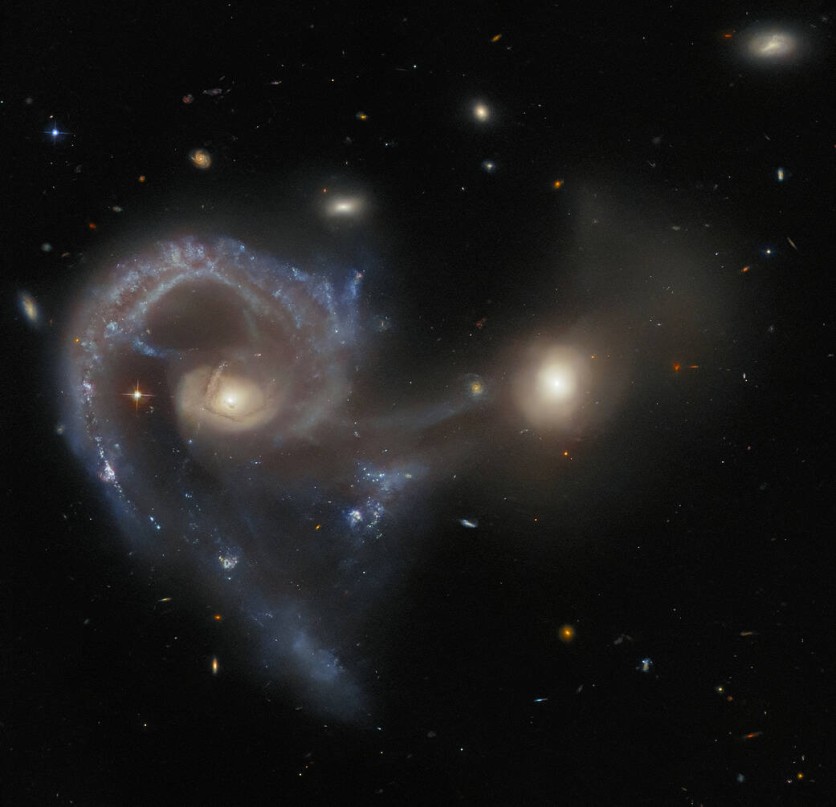In the vast expanse of the cosmos, a celestial spectacle unfolds that was captured through the lens of NASA's Hubble Space Telescope. This captivating image showcases Arp 107, a peculiar pair of colliding galaxies, in the midst of a spectacular cosmic dance.

NASA's Hubble Space Telescope Captures Colliding Galaxies
The dominant figure on the left is an exceptionally dynamic Seyfert galaxy characterized by its intense energy emissions. Nestled at its core lies an active galactic nucleus, radiating brilliance that remarkably does not overwhelm the image, allowing the intricate details of the galaxy's structure to emerge.
This vivid snapshot unveils the sprawling arms, regions aglow with stellar birth, and the curved veils of cosmic dust. Every facet of this galaxy is laid bare for scrutiny.
Its smaller companion, positioned to the right, maintains a delicate connection to its larger counterpart, a slender bridge of cosmic debris linking their destinies. Together, they form a mesmerizing cosmic diorama, a visual testament to the unforgiving forces at play in the cosmos.
This captivating dance of galaxies transpires roughly 465 million light-years from our vantage point on Earth. It's a snapshot frozen in the vast expanse of cosmic time, revealing a chapter in the turbulent narrative of the universe's evolution.
The Arp 107 system is a distinguished member of the Atlas of Peculiar Galaxies, a compendium meticulously curated by Halton Arp in 1966. In a testament to Hubble's relentless quest for cosmic understanding, this captivating duo found its way into the telescope's scrutiny as part of a comprehensive observational campaign dedicated to catalog members.
These endeavors, aimed at unraveling the enigmatic nature of these galaxies, offer a rare glimpse into the cosmic tapestry of our universe.
All About the Atlas of Peculiar Galaxies
The Atlas of Peculiar Galaxies is a catalog of galaxies compiled by the American astronomer Halton Arp. It was first published in 1966 and later expanded in 1969.
This atlas contains images and descriptions of various galaxies that exhibit peculiar or unusual features, such as distorted shapes, interactions with neighboring galaxies, or distributions of stars and gas.
Arp's work was significant in the field of astronomy as it provided a systematic way to classify and study galaxies that deviated from the typical spiral and elliptical forms.
The atlas contributed to our understanding of galaxy evolution and dynamics, particularly in dense regions of the universe, where interactions between galaxies are common.
Many of the galaxies featured in the Atlas of Peculiar Galaxies have since become well-known objects of study in their own right, and this work remains an important resource for astronomers studying galaxy morphology and interactions.
Related Article : NASA's Hubble Space Telescope Captures 'Butterfly Nebula' In Stunning Motion | Fun Facts About This Beautiful Space Butterfly

ⓒ 2025 TECHTIMES.com All rights reserved. Do not reproduce without permission.




